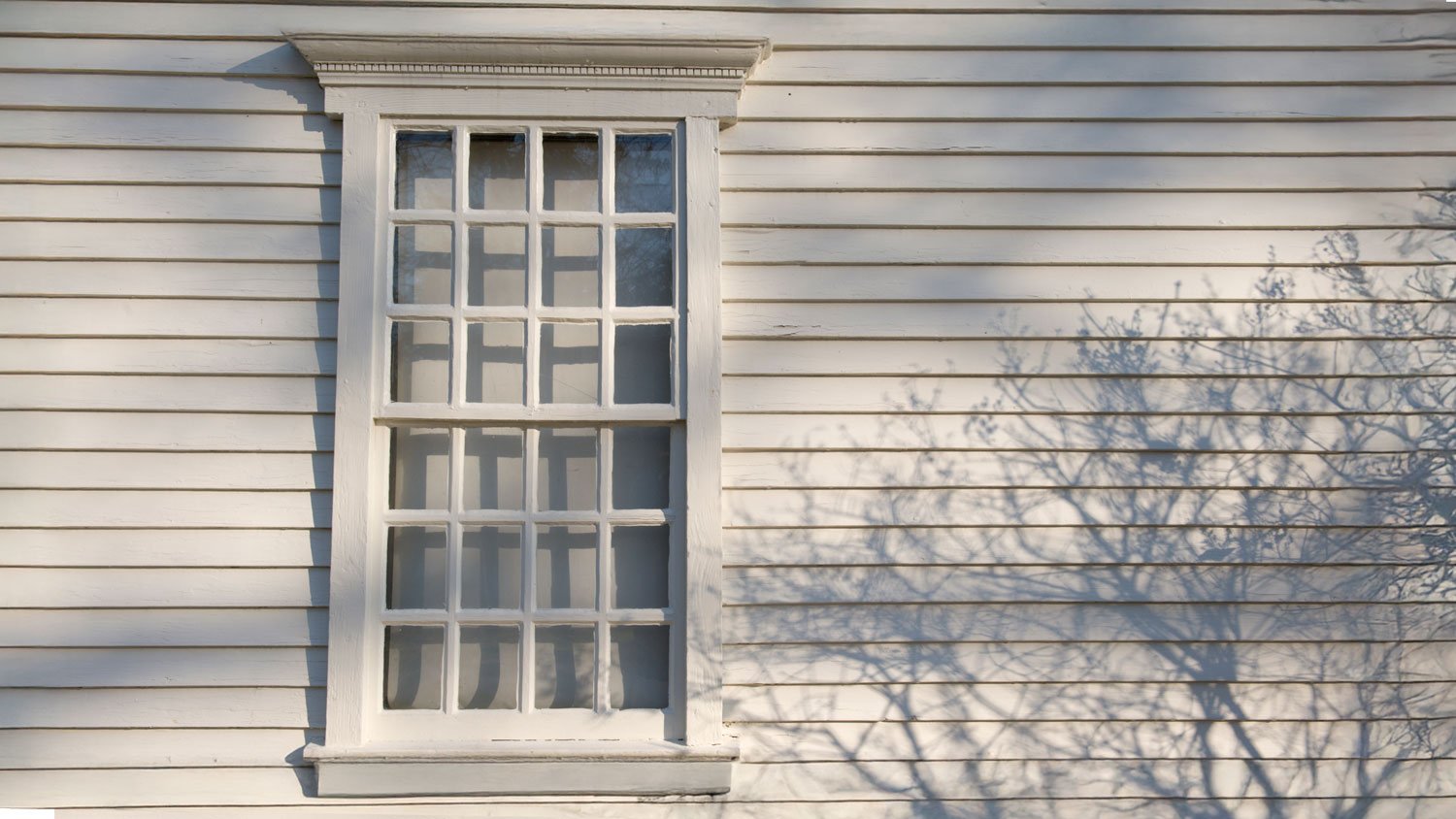
Repairing broken windows instantly transforms your home and is cheaper than replacement. Here’s what you need to know about window repair costs in Chicago.
Defog your window and see clearly again


If you notice that your windows are too foggy to enjoy the view outside, there are a few routes you can take to repair them. A properly insulated window should prevent fogging, but when the seal fails, air gets between the panes, and moisture gradually builds up. Use our guide to learn how to fix foggy windows in your home.
It’s common for double- or triple-pane windows to collect moisture between the panes when the seal fails, making the window fog up. Window seals can break because of old age, exposure to water, or big temperature changes. As a result, moisture and calcium deposits build up between the panes and etch into the glass.
Luckily, you can learn how to fix foggy double-pane windows and triple-pane windows to restore them to their original glory—or you can replace them with newer versions.
The cost to fix foggy windows usually falls between $75 and $200 per window, depending on the repair method. Defogging is the quickest and most affordable option, but it’s not a long-term fix since it doesn’t prevent them from fogging again. Replacing the seal or insulated glass unit is a more expensive but also more permanent fix.
If the frame is severely damaged or outdated, you may need a full window replacement, which is the priciest option, averaging about $750 per window.
You have a few options to fix foggy windows. The quickest fix is to simply clean out the trapped fog using a cleaning solution. But for longer-term fixes—particularly if the window is damaged—you’ll need to replace either part or all of the window.
Suppose the window sealant is not entirely damaged, or you want an effortless fix for your foggy windows. In that case, defogging the window in place can be an effective fix for double-pane windows without doing major work.
While this method is affordable for removing the trapped fog in double-pane windows, it is only cosmetic. It doesn't replace the inert gas between the panes or restore the window's heat efficiency. Because you’ll be drilling into the glass, be sure to wear safety goggles, a dust mask, and heavy gloves to protect yourself in case of broken glass or glass dust.
Follow these steps:
Drill Holes in the Glass: Drill tiny holes at the top and bottom of the window in the outer pane of glass. Use a carbide-tipped drill bit to avoid breaking the glass.
Add a Drainage Tube: Use caulk to attach a plastic tube to the lower hole. Allow the caulk to dry completely before going to the next step. Most caulk requires 24 hours to dry.
Clean the Inside of the Glass: Using the upper hole, add a cleaning solution to the interior of the panes of glass. Then add a spray rinse solution through the same hole to finish washing the glass. As the solutions run down the glass to the bottom, they should drain out of the tube.
Remove Remaining Moisture: Using the upper hole again, add a drying agent to the interior of the window, removing any remaining moisture. Then add an anti-fog coating.
Reseal the Holes: After adding these agents and coatings, seal the holes in the window immediately. If you wait, you could allow damp air to re-enter the space between the panes. Clean the holes before covering them with a special air sieve that prevents dust, insects, and moisture from entering.
| Pros | Cons |
|---|---|
| No window removal | Requires special DIY skills |
| Inexpensive option | Only a cosmetic fix |
| Quick process | Could break glass |

If the seal fails, your window will never be thermally efficient unless you reseal it. If you don't repair the sealant, it's only a matter of time before your window gets foggy again.
Replacing the window sealant is usually more affordable than total window replacement because it requires less labor and fewer parts. Repairing a faulty window sealant costs anywhere between $75 and $200.
These are the steps to add new window sealant:
Dismantle the Window: First, remove the window trim. Then pull the panel out using a suction cup. Next, take the panel apart. Use a razor blade to separate the glass and the sealant, but do so carefully to avoid breaking the glass.
Clean the Glass: Clean the glass by removing any residue from the sealant. Then, use a glass cleaner to remove dust, streaks, and other contaminants.
Replace the Silica: Trim the sealant away from the frame, gaining access to the area that stores the silica beads. Place fresh silica beads into the space to help with moisture absorption after you put the window back together.
Reassemble the Window: Put the panes back inside the frames and caulk the edges of the window sashes. Allow it to dry, which may take about 24 hours, before removing excess caulk.
Apply Sealant: Finally, apply a window seal, adding a thick layer at the corners. Allow everything to dry before putting the panel back in place and securing it.
| Pros | Cons |
|---|---|
| Restores temperature control | Challenging DIY job |
| Cheaper option | Lengthy process |
| Immediate benefits | Breakage is common |
If your window sash is damaged but the frame is still in good condition, replacing the sash is a relatively affordable way to fix foggy windows. The sash holds the glass in place and is often the main culprit when seals fail, allowing moisture to seep between panes. Installing a new sash can restore the window’s clarity and improve insulation without the cost of a full window replacement.
Steps to replace a window sash:
Measure and Order a New Sash: Take measurements of your existing sash to ensure a proper fit. Most manufacturers sell replacement sashes for their window models.
Remove the Old Sash: Depending on the window type, you may need to remove trim, screws, or a balance system to lift out the sash.
Install the New Sash: Fit the new sash into place, making sure the seal is tight to prevent future fogging. Secure it with any necessary hardware.
Check for Proper Operation: Open and close the window to ensure smooth movement and a tight seal.
| Pros | Cons |
|---|---|
| More affordable than full window replacement | Limited to windows with replaceable sashes |
| Restores insulation and visibility | May not be an option for older or custom windows |
| Easier DIY project than replacing an entire window |
Almost all modern windows are insulated window units, or IGUs. IGU stands for “insulating glass units,” which refers to the sealed part of the window with two or more panes of glass and gas between them.
In reality, all IGU units gradually lose the inert gas in the space between panes, and the sealants themselves wear down in time. Persistent fogging and drafts are signs that the IGU’s seal has failed.
You can often replace the IGU without replacing the entire frame. Most high-quality windows come with a 20-year warranty at the time of purchase for glass seal failure. Replacing an IGU is a difficult task to DIY, so it’s best to hire a pro to ensure it’s done safely and correctly.
| Pros | Cons |
|---|---|
| Renews inert gases | Difficult DIY job |
| Cheaper option | Few pros do this job |
| New warranty period | Time-consuming work |
If the fogging in your window is accompanied by visible cracks or chips, patching the broken glass is a temporary solution. Patching can reinforce the glass, but it won’t replace lost gas insulation or prevent further damage since even minor cracks can compromise the window’s seal. For that reason, this method is best for small cracks and should only be used as a short-term fix until you can replace the glass or the entire window.
Steps to patch broken glass:
Clean the Area: Wipe down the glass with a damp cloth to remove dust and debris.
Apply Clear Nail Polish or Epoxy: Apply a thin layer of clear nail polish or a specialized glass repair epoxy to seal the damage. Let it dry completely.
Use a Glass Repair Film: If the crack is larger, a temporary window film can help reinforce the glass and prevent further spreading.
Monitor for Further Damage: Even with a patch, cracked glass is weakened and may continue to break over time, especially in extreme temperatures.
| Pros | Cons |
|---|---|
| A quick and inexpensive fix | Only slows further damage |
| Can temporarily reinforce minor cracks | Doesn’t restore insulation or prevent fogging |
| Delays the need for immediate replacement | Not a permanent fix |
If your windows fog up due to condensation rather than a broken seal, warming them up can help reduce moisture buildup. This method is only effective for fogging caused by temperature differences between the glass and indoor air—not for windows with a failed seal.
Steps to warm up windows:
Increase Indoor Temperature: Raising the room temperature can help reduce condensation on cold window glass.
Use a Hair Dryer or Space Heater: Gently warm the glass with a hair dryer or a nearby space heater to evaporate surface moisture. Take care not to overheat the window, as sudden temperature changes can stress it.
Improve Air Circulation: Running ceiling fans or keeping blinds open allows warm air to reach the glass and prevent condensation buildup.
Reduce Indoor Humidity: Using a dehumidifier or cracking open a window slightly can help balance moisture levels inside your home.
| Pros | Cons |
|---|---|
| Quick and easy fix | Only works for surface condensation |
| No tools or repairs needed | Won’t fix a broken seal or internal fogging |
| Helps prevent moisture-related damage | Requires ongoing effort in humid conditions |
If your window is more than 20 years old, the glass is cracked, or the frame is rotting, you should consult with a local window repair professional to evaluate if you need to replace the window.
The typical window replacement cost is about $750 per window. Investing in high-quality windows will not only solve fogging problems but also make your home more energy-efficient and enhance aesthetics.
If you choose to try to do this work yourself, you will need to learn how to measure for replacement windows because precise measurements are vital to a successful project.
| Pros | Cons |
|---|---|
| New window warranty | Priciest option |
| New design features | Creates waste |
| Common job for pros | May not match others |
Foggy windows are often caused by trapped moisture, poor insulation, or high indoor humidity. While some cases require repairs, simple preventative steps can help keep your windows clear and energy-efficient.
Invest in High-Quality Windows: Upgrading to energy-efficient windows reduces heat loss and prevents condensation. If a full replacement isn’t an option, you can add weather stripping to improve insulation and potentially prevent fogging.
Use a Dehumidifier: Running a dehumidifier near problem areas, like kitchens and bathrooms, helps control indoor humidity and reduces moisture buildup on windows.
Install a Window Film Kit: Applying a plastic film over the window creates a barrier that prevents warm, moist indoor air from reaching the glass and causing condensation.
Run Air Fans Regularly: Keeping ceiling fans or exhaust fans running helps circulate air and prevent humidity from collecting near windows.
Ensure Proper Installation: Poorly installed windows can lead to broken seals, allowing moisture inside the panes.
Inspect Windows Often: Regularly checking for cracks, gaps, and seal failures, especially after extreme weather, can help you catch issues early before fogging becomes a problem.
While it’s possible to fix a foggy window on your own, hiring a professional always ensures the job is done correctly and safely. Contact a window repair professional to tackle the defogging process, or hire a local window replacement specialist to remove the current version and install a new one. The pros can also assist you with choosing the best replacement windows for your needs.
I've had my windows for about a month now and it has been night & day. I live in the loop near Millennium Park, so I had constant noise 24/7 as my building/existing windows are very old. I no longer have to pause what I'm watching at night to wait for whatever ruckus outside is happening to...
Stan is great to work with. Honest and very knowledgeable. The project was done quickly. He promptly came the following day to address a minor issue. Great customer service. Highly recommend.
We were overwhelmed building our house. A lot of different people were telling us different things, and you don t know if you re always going to get what you ask for. We ended up going with Supreme Showers at our contractor s recommendation. Alex came in, took measurements, gave us advice on...
Professional, conscientious, easy to work with, fast, and most importantly, did not charge over their estimate! NO SURPRISES! I especially like the way this company works. I provided an inventory over the phone and they gave me a quote that would be within a small window. They do not nickel...
Since purchasing our first home we have had many disappointing and frustrating experiences with other vendors, so working with Revisions was like a breath of fresh air. We contacted 3 different vendors when we knew we wanted new Marvin windows installed on the first floor of our home. After...
I couldn't recommend John and his company any higher. We are so pleased with our new windows and French sliding door. They not only look fantastic, but we immediately noticed a huge sound and air quality difference in our home. These are beautiful windows, and a high-quality product that...
From average costs to expert advice, get all the answers you need to get your job done.

Repairing broken windows instantly transforms your home and is cheaper than replacement. Here’s what you need to know about window repair costs in Chicago.

New windows can keep your home’s temperature comfortable regardless of the weather outside. Learn how much window replacement costs in Chicago, Illinois.

Smart glass makes your home more comfortable and energy-efficient, but at what price? Learn how much smart glass costs and if it’s a good option for you.

Keep the cold out and warmth in. Learn how to glaze your windows in under 60 minutes with this simple, step-by-step guide.

The average double-hung window costs $800, but prices vary by size, material, type, and more. Read this guide to help you budget for your double-hung windows.

Whether it's cracked, drafty, or just won't open all the way, who do you call to fix a broken window? Let's talk about the best pros for the job and who to call as a backup.